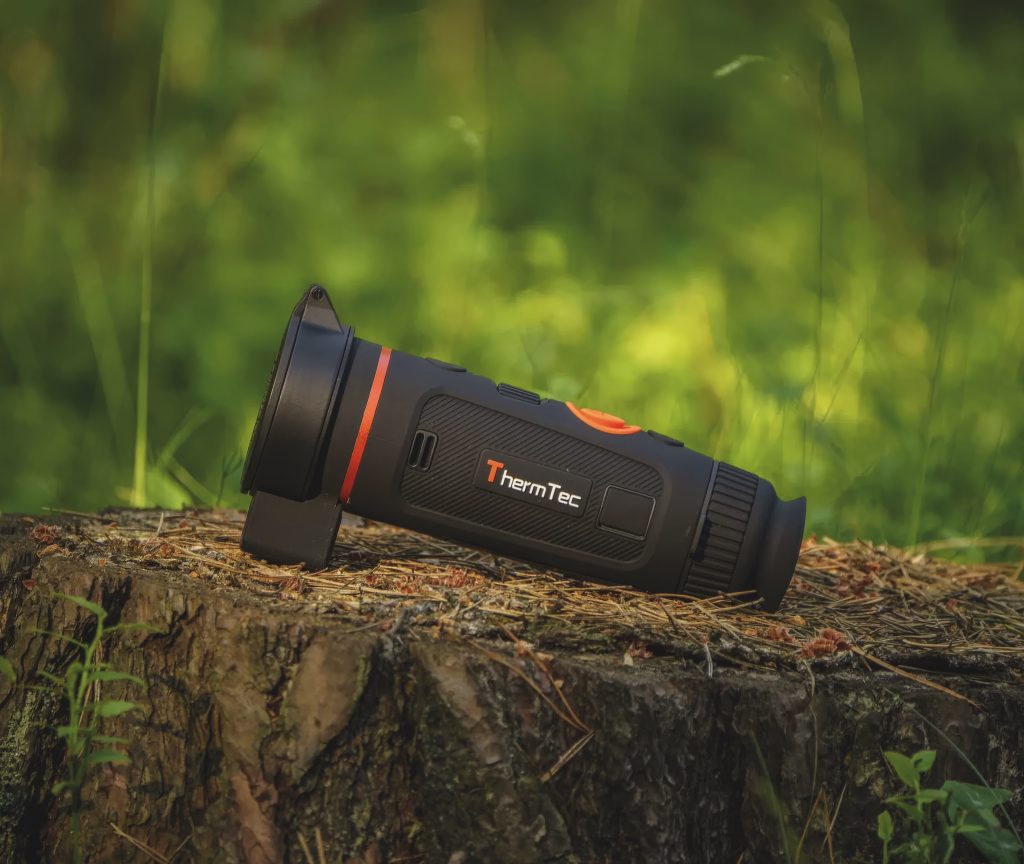Win CENS ProFlex DX5 earplugs worth £1,149 – enter here
Ammo options for .22 centrefire
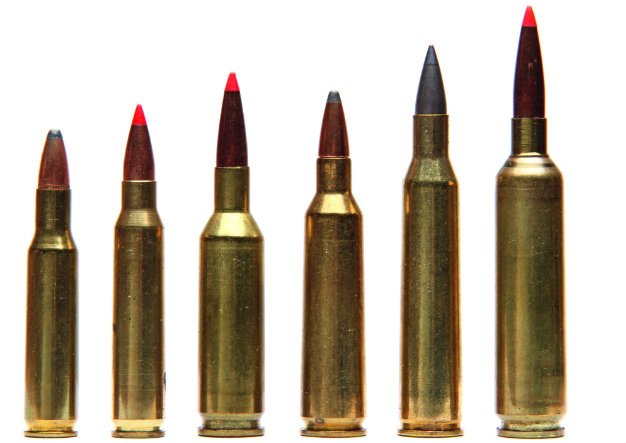
Those of us who like rifles and rifle shooting often develop an interest in calibres and cartridges that are a bit out of the ordinary. It also gives us something else to talk about. However, it is a huge subject, so for today’s purposes we’ll just look at .22 centrefires and restrict it even more to those for which factory ammunition is available, even if you have to ask your dealer to order it especially.
In the UK, most of us choose a .22 Hornet, .222, .223 or .22-250, for the same reason that most people drive similar, mass-produced family cars – they are affordable, easily available and do the job perfectly well. However, that can easily become synonymous with bloody boring, which may be why I drive an old Range Rover for “best”, a Series III Land Rover for mucking about, and why I am busy restoring a 1969 Jaguar Mk2/240. Nothing bog-standard or remotely boring there!
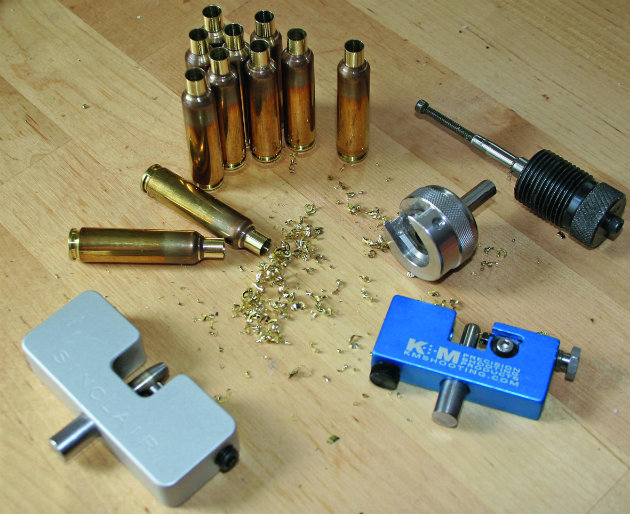
The necks of these cases are being turned down to size after swaging with a neck turning tool
On the rifle front, my very first .22 centrefire, bought in Australia in 1964, was a Winchester Model 1892 re-barrelled from its original .32-20 cartridge to .218 Bee. You could buy ammunition for the Bee, and can still do so today, rather than having to neck down and then fire-form .25-20 or .32-20 cases. With the same bullets, it produces about 200fps more velocity than the Hornet and is a firstrate varmint cartridge, but still does not produce quite enough energy to be legal for Roe in Scotland or for Muntjac and Chinese Water Deer in England and Wales.
Reload your ammo
Factory ammo is loaded quite conservatively because it might be fired in ancient
lever action rifles, so handloading in a modern rifle can improve it somewhat, if you really feel you need any more.
One advantage of the Hornet and the Bee, if you do reload your own ammo, is that you get an awful lot of shots – well over 500 – from a pound of powder.
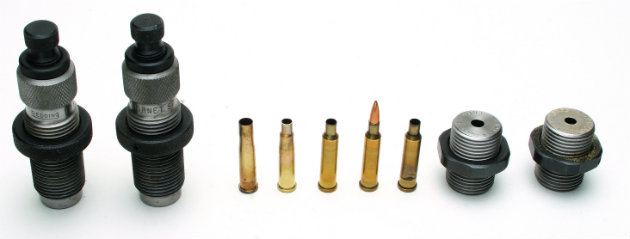
.22 Hornet case can be wildcatted to .22 K Hornet or necked down to a .14 Walker Hornet or .17 Hornet as shown
If you are into reloading you can be even more adventurous and have your rifle re-chambered for the .22 K-Hornet or the .218 Mashburn Bee. Both offer improved ballistics and the Mashburn Bee produces sufficient energy to be legal for small deer. Cases are made simply by firing factory ammo in the “improved” chambers. Both the K-Hornet and the Mashburn Bee are “Wildcat” cartridges, which means, for those of you who wear fewer anoraks than I, that they were developed privately and ammo specifically for the “improved” versions has never been available from any of the major manufacturers.
Velocity and energy
Stepping up in velocity and energy, I know several people who have bought rifles chambered for the .22 PPC. They all report exceptional accuracy, with muzzle velocity and energy very similar to the .223. The PPC started life as a Wildcat but was then adopted (tamed?) by Sako and ammo is available from several manufacturers. Those with a suitable anorak will remember that it was originally developed from the .220 Russian cartridge, which was itself formed by necking down the 7.62×39 cases for the AK47 Kalashnikov – and you don’t need any kind of anorak to have heard of that one!

Make sure you stay within the law if you are thinking of using smaller calibres for deer
Moving up into the rarefied atmosphere inhabited by the .22-250, we come to the .225 Winchester and the .220 Swift. Both comfortably match the .22-250 and some will even claim that they are better cartridges. However, if we are being honest you can’t really get a cigarette-paper between them so far as performance is concerned. All will drive a 40 grain bullet at more than 4,000 fps, or a heavier 55 grain at 3,600 to 3,800, where the Swift and the Winchester might be seen to have a slight edge, a very slight edge, over the .22-250.
The .220 Swift can actually produce muzzle energies exceeding 1,700 ft/lbs, but please remember that does not make it legal for our larger deer. You also need a calibre of at least .240 in England and Wales or, in Scotland, 1,750 ft/lbs (which the .220 Swift can do) and a bullet of at least 100 grains weight (which it can’t).
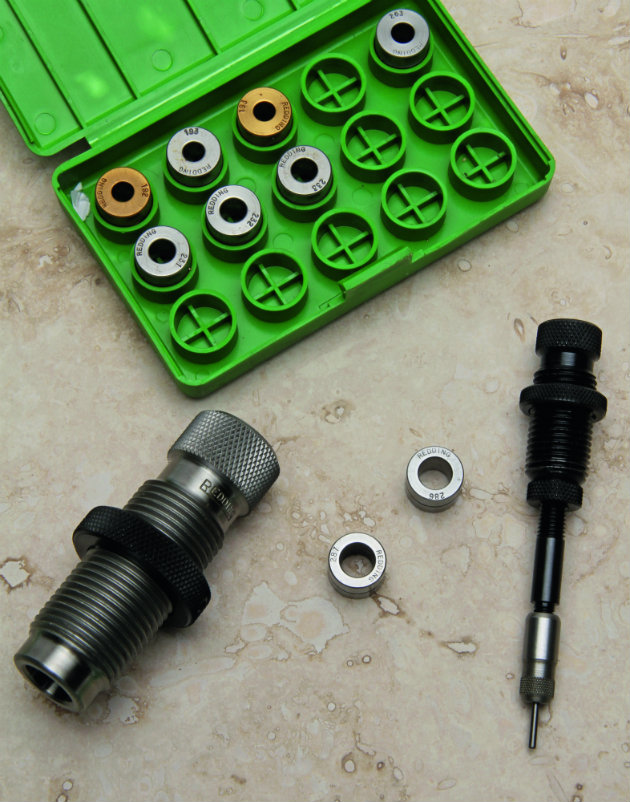
A neck sizing reloading die can be used to reduce a case neck diameter for a .22 centrefire
Factory ammunition is available for all the above cartridges, which makes it very easy for anyone who fancies something different but doesn’t want the hassle of complex reloading techniques. The K-Hornet and the Mashburn Bee, although you cannot buy the precisely correct ammunition, will fire factory ammo for .22 Hornet or .218 Bee, as appropriate, quite happily until you get round to reloading the fire-formed cases; or persuading a reloading friend to do so.
Those of us who shoot as a recreation rather than from necessity will spend a lot more time looking at our rifles and talking about them than we do firing them, which can make owning something a bit different an attractive proposition.
Related Articles
Get the latest news delivered direct to your door
Subscribe to Shooting Times & Country
Discover the ultimate companion for field sports enthusiasts with Shooting Times & Country Magazine, the UK’s leading weekly publication that has been at the forefront of shooting culture since 1882. Subscribers gain access to expert tips, comprehensive gear reviews, seasonal advice and a vibrant community of like-minded shooters.
Save on shop price when you subscribe with weekly issues featuring in-depth articles on gundog training, exclusive member offers and access to the digital back issue library. A Shooting Times & Country subscription is more than a magazine, don’t just read about the countryside; immerse yourself in its most authoritative and engaging publication.







